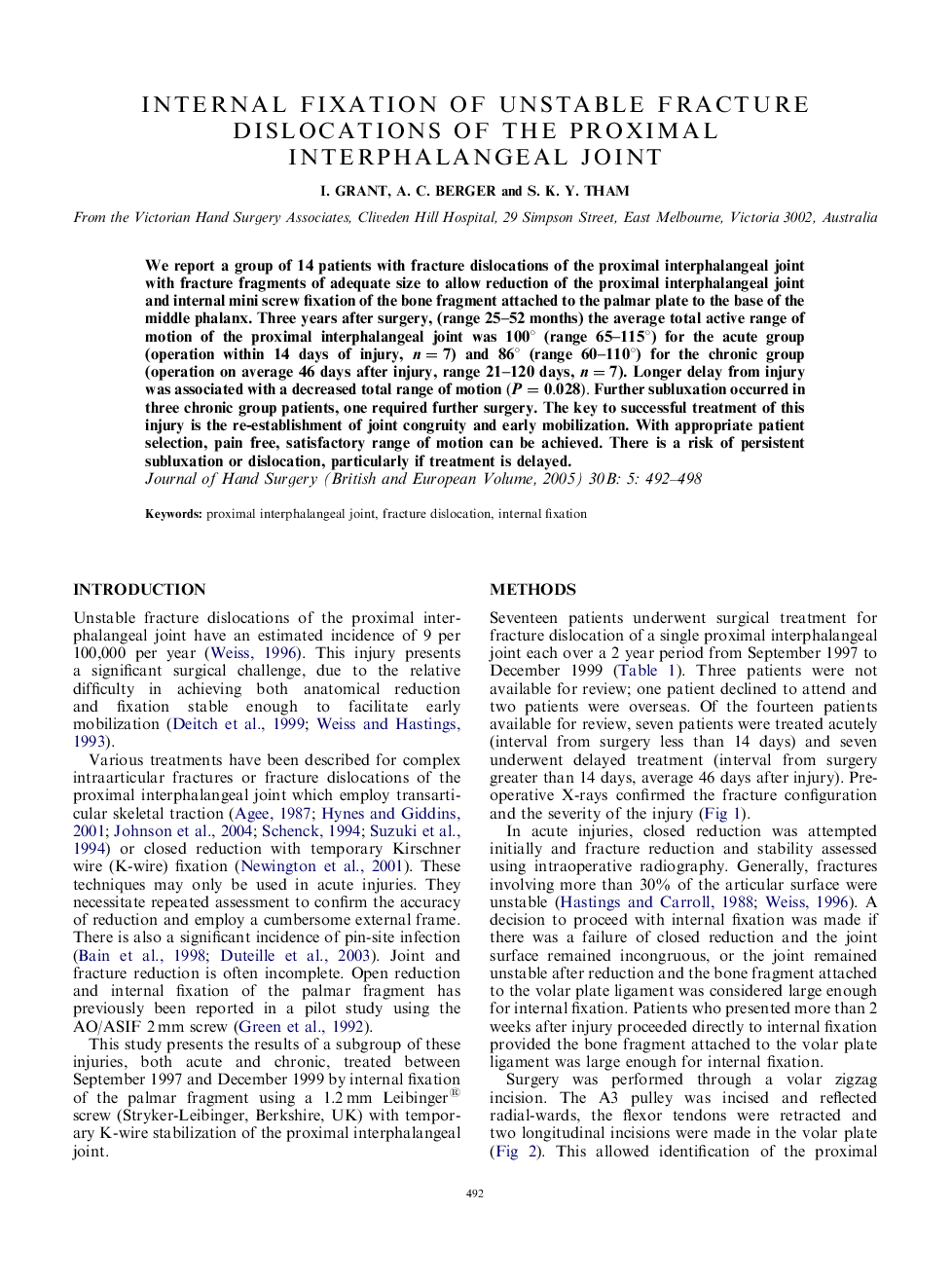| Article ID | Journal | Published Year | Pages | File Type |
|---|---|---|---|---|
| 10084584 | The Journal of Hand Surgery: British & European Volume | 2005 | 7 Pages |
Abstract
We report a group of 14 patients with fracture dislocations of the proximal interphalangeal joint with fracture fragments of adequate size to allow reduction of the proximal interphalangeal joint and internal mini screw fixation of the bone fragment attached to the palmar plate to the base of the middle phalanx. Three years after surgery, (range 25-52 months) the average total active range of motion of the proximal interphalangeal joint was 100° (range 65-115°) for the acute group (operation within 14 days of injury, n=7) and 86° (range 60-110°) for the chronic group (operation on average 46 days after injury, range 21-120 days, n=7). Longer delay from injury was associated with a decreased total range of motion (P=0.028). Further subluxation occurred in three chronic group patients, one required further surgery. The key to successful treatment of this injury is the re-establishment of joint congruity and early mobilization. With appropriate patient selection, pain free, satisfactory range of motion can be achieved. There is a risk of persistent subluxation or dislocation, particularly if treatment is delayed.
Related Topics
Health Sciences
Medicine and Dentistry
Orthopedics, Sports Medicine and Rehabilitation
Authors
I. Grant, A.C. Berger, S.K.Y. Tham,
